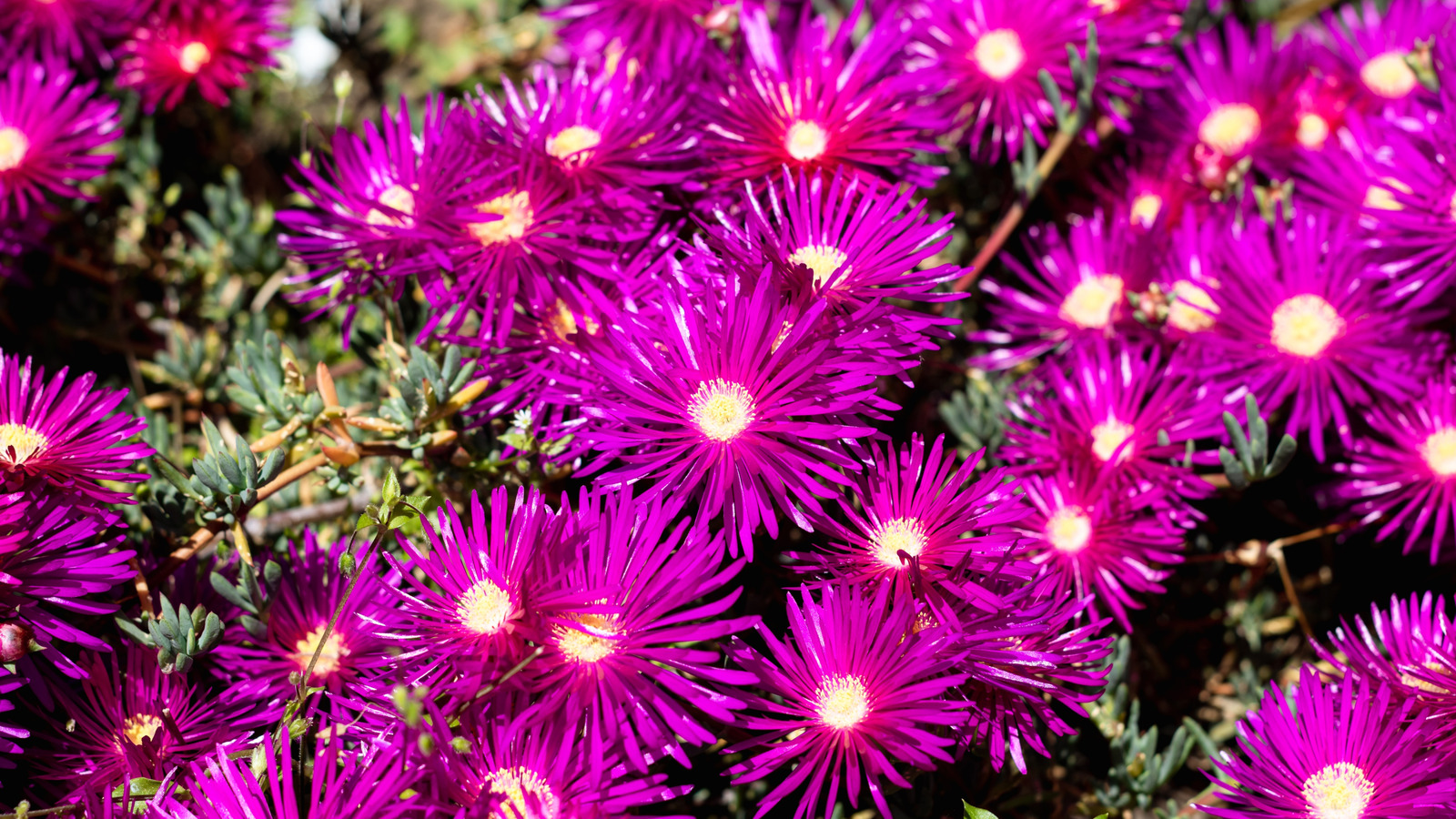
Cooper’s hardy ice plant (Delosperma cooperi) is a bright, drought-tolerant succulent often used as a ground cover for lawns, much to the delight of gardeners and pollinators. While its care needs are typically easy, it does require somewhat ideal conditions to thrive. After planting, a few common issues may arise in the hardy ice plant. Yellowing or drooping leaves are a signal there’s an issue with its moisture level, and you may encounter occasional pests, such as aphids or mealybugs. Luckily, if you know what to look for in your ice plant before and after planting it, you’ll know how to avoid these problems.
Succulents are widely known as resilient, low-maintenance plants, and thanks to the wide variety of species, you can find an option for nearly any garden. Cooper’s hardy ice plant is a standout among the succulent family, offering a vibrant display of purple-pink flowers when it blooms. A quick grower, it forms a mat of color during the summer months, cascading over garden walls, spilling in containers, and making an attractive addition to your landscape, especially for xeriscaping. If you’re new to the plant, here’s what to watch out for, as well as ways to prevent any future issues.
Avoid these common problems with your ice plant succulent
Though a hearty plant, this succulent can be particular regarding its soil moisture. The leaves of your ice plant will show signs of overwatering if you are too quick to hydrate it. Dead or withered leaves, as well as yellowed foliage, can indicate root rot, a condition where a plant’s roots have damage from excess water. The rot essentially suffocates the plant’s roots, limiting its nutrient and water intake. You should inspect the roots, if possible, to determine if this is the issue. Once you examine them, look for other signs of this disease, including mushy, squishy, or smelly roots.
Your ice plant, like other succulents, does well with neglect, particularly in its water needs. The key to avoiding root rot and its effects on your succulent is to make sure you water it properly. A good watering practice for Cooper’s hardy ice plant is to water only when needed after testing the soil with your finger to determine if it’s dry. Be sure you let the soil dry out between waterings. Ice plants are very drought-resistant, and don’t require much water. Remember, these plants are technically succulents and therefore they have an ability to store water in its stems and leaves for replenishment when necessary. You should also ensure your plant is in well-drained soil, and if in a container, consider transferring it to a new pot. Although it’s not very common, you may have an occasional mealybug or aphid pop up on your Cooper’s hardy ice plant’s leaves; you can remove these easily by spraying them with a bit of water or by brushing the leaves with rubbing alcohol.






